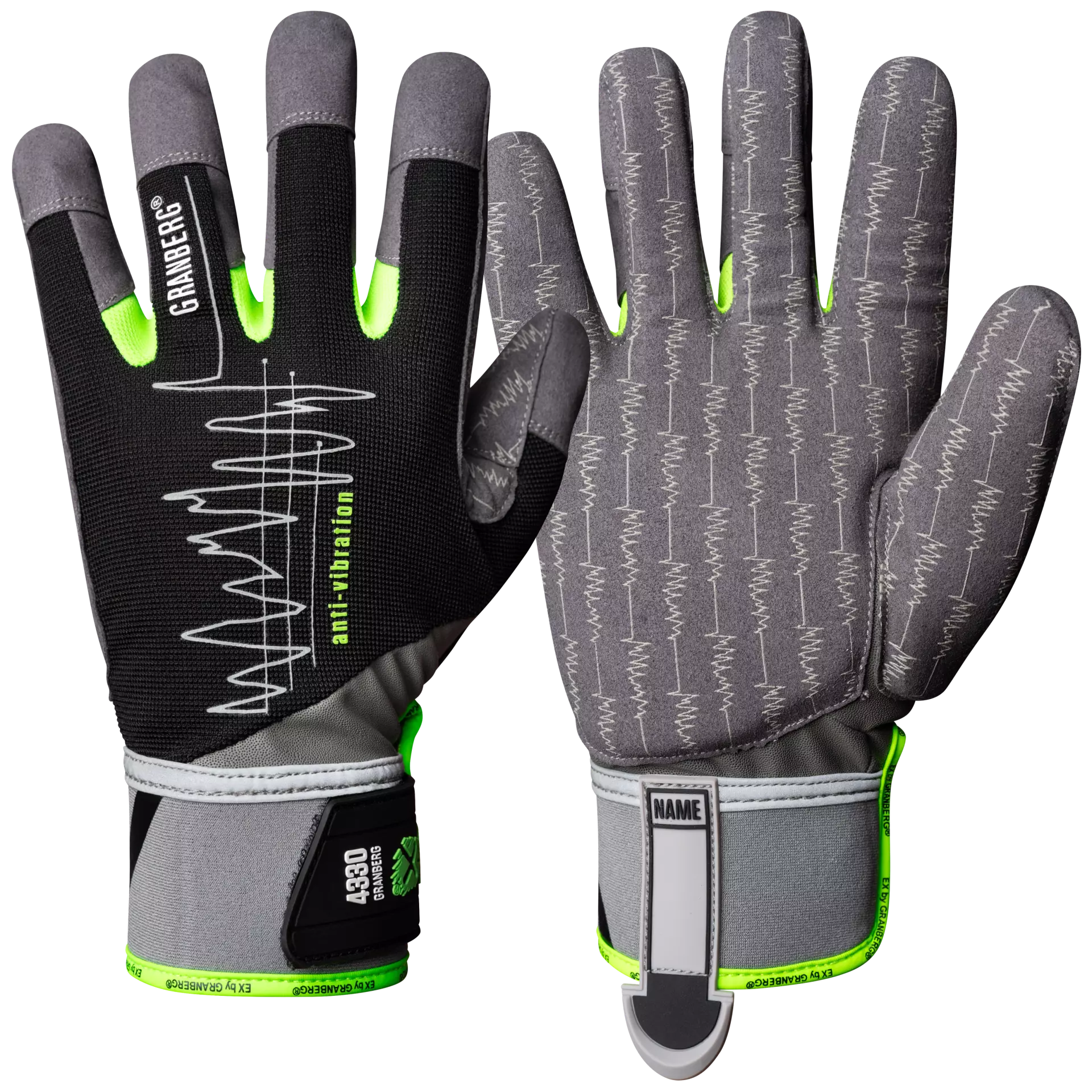
Product description
These specialized anti-vibration gloves are engineered to reduce the risks of Hand-Arm Vibration Syndrome (HAVS) through advanced vibration-dampening technology in the palm. Featuring MacroSkin Pro® construction with a secure Velcro closure, these gloves provide exceptional protection at high frequencies while maintaining effectiveness across a broad spectrum. The combination of durability and flexibility ensures optimal comfort and performance during extended use with vibrating tools.
Product Features:
- Special vibration-reducing material layer in palm
- Breathable construction
- Hook and loop closure with reflective elements
- Tight-fitting design for precise control
- Enhanced grip in both dry and wet conditions
Technical Details:
- Back material: Spandex/Polyester blend
- Palm material: MacroSkin Pro®
- Protection levels:
—Abrasion resistance: Level 2
—Cut resistance: Level 2
—Tear resistance: Level 2
—Puncture resistance: Level 1
—TDM cut resistance: X
Recommended Applications:
- Suitable for jackhammers
- Impact drills and wrenches
- Sanders and plate compactors
- Concrete saws
- Other vibrating tools
Standards:
- EN ISO 10819:2013 (Mechanical vibration and shock)
- CE Category II
- EN 420:2003+A1:2009
- UKCA certified
About Antivibration Glove
Antivibration Gloves feature specialized padding that reduces harmful vibrations from power tools and machinery. These durable work gloves help prevent hand-arm vibration syndrome while providing excellent grip and control. Perfect for construction, manufacturing, and automotive industries where vibrating equipment is used regularly.
- Impact Resistance
- Hand Protection
- Slip Resistant
- Cut Resistant
Standards and labels
Granberg delivery terms
Free delivery for all Granberg products
Granberg
EX® Vibration-reducing work gloves, Black/Grey, 6 pairs
EX® Vibration-reducing work gloves, Black/Grey, 6 pairs
5 / 5
224,83 €
Price per 6 pairs
37,47 € / pair
Choose size
Free delivery